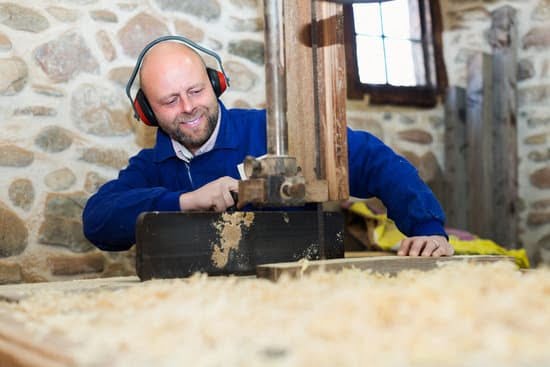White cabinets and woodwork have long been a staple in interior design, offering a timeless elegance that can elevate any space. However, choosing the right shade of white can be a daunting task. In this blog post, we will explore the artistry of selecting the perfect white for your cabinets and woodwork.
White has the remarkable ability to add a touch of classic sophistication to any room. Whether you are designing a contemporary kitchen or revamping your home office, white cabinets and woodwork can create a clean and fresh aesthetic that never goes out of style. But with countless shades of white available, it is crucial to choose wisely.
Understanding the intricacies of different shades of white is essential in achieving the desired look and feel for your space. Undertones play a significant role in how white appears in various lighting conditions and alongside surrounding elements. By delving into the vast array of white shades and exploring their undertones, you can make an informed decision that enhances the overall harmony of your room.
Join us on this artistic journey as we delve into topics such as harmonizing white with existing color palettes, harnessing natural light’s transformative power on white cabinets, selecting durable finishes that stand the test of time, creating captivating contrasts with accent colors, adding depth through textured materials, and striking the balance between timeless appeal and personal style.
With this comprehensive guide at hand, you will be well-equipped to choose the perfect shade of white for your cabinets and woodwork, transforming your space into an oasis of elegance and charm.
Understanding Different Shades of White
White is often seen as a neutral color, but when it comes to cabinets and woodwork, there are actually countless shades of white to choose from. Understanding the different shades and undertones can greatly impact the overall look and feel of a room. In this section, we will provide a comprehensive guide to help you navigate through the world of white.
Exploring the Vast Array of White Shades
The first step in understanding different shades of white is to recognize that there is no one-size-fits-all option. From cool whites with blue or gray undertones to warm whites with hints of yellow or brown, each shade creates a distinct atmosphere. It’s essential to consider other elements in the space, such as flooring and furniture, when choosing the right shade.
The Impact of Undertones
Undertones play a significant role in how white cabinets and woodwork interact with their surroundings. Cool undertones like blue or gray create a crisp and contemporary feel, while warm undertones like yellow or brown add a sense of warmth and coziness. Consider which undertones will complement your existing color palette and achieve the desired aesthetic for your space.
Another factor to keep in mind is light reflection. Colors within the same whitewash family can appear significantly different depending on the lighting conditions in your home. It’s important to test out samples in various lighting situations to ensure you select the shade that best enhances your space.
Tips for Choosing the Right Shade
When choosing among different shades of white, it’s crucial to take into account your personal preferences as well as the overall mood you want to create in your home. If you desire a bright and airy feeling, opt for cooler whites with blue or gray undertones. For a warmer and more inviting ambiance, consider warm whites with yellow or brown undertones.
Additionally, consider choosing a slightly contrasting shade from your existing wall color to create depth and visual interest. For example, if your walls are a warm beige, selecting a cooler white for your cabinets can introduce a subtle contrast that makes the space more engaging.
Understanding the vast array of white shades available and their impact on the overall look and feel of a room is crucial when choosing cabinets and woodwork. By considering different undertones and assessing how natural light interacts with various shades, you can confidently select the perfect shade of white that harmonizes with your existing color palette and enhances the aesthetic of your space.
Considering the Existing Color Palette
When it comes to choosing the right shade of white for cabinets and woodwork, it is essential to consider the existing color palette in your space. Harmonizing white with the surrounding elements can create a cohesive and visually pleasing aesthetic. Here are some tips on how to choose a white shade that complements your existing wall colors, flooring, and furniture.
Assessing the Undertones
Before selecting a shade of white, it is important to understand the undertones present in your space. Undertones can have a significant impact on how white appears in different lighting conditions.
For example, if your walls have warm undertones like beige or yellow, it is best to choose a warmer white shade to create a harmonious look. On the other hand, if your space has cooler undertones like blue or gray, opting for a cooler white shade will help maintain a cohesive color scheme.
Finding Balance
While harmonizing with existing colors is crucial, finding the right balance between contrasting and blending is equally important. If you have bold or vibrant wall colors, pairing them with a crisp pure white can create an eye-catching contrast and focal point in your space. Conversely, if you prefer a more monochromatic look, choosing a softer off-white or ivory shade can help create a seamless blend between your cabinets and surrounding elements.
Testing Samples
To ensure that you choose the perfect white shade for your cabinets and woodwork, it’s always recommended to test out samples before making a final decision. Paint small swatches on your walls and place them next to your cabinets and other furnishings to see how they interact with each other throughout the day as lighting changes. This will give you a better understanding of how different shades of white will look in your specific environment.
By considering the existing color palette in your space when choosing white for cabinets and woodwork, you can achieve a harmonious and visually cohesive look. Whether you opt for a warm or cool white shade, finding the right balance and testing samples will help you create a space that is both aesthetically pleasing and reflective of your personal style.
Remember, selecting the perfect shade of white is part of an artistic journey, so take your time and enjoy the process of creating your ideal space.
Natural Light and White Cabinets
When it comes to choosing the right shade of white for cabinets and woodwork, one important factor to consider is natural light. Natural light has a profound impact on the way white cabinets and woodwork appear in a space. It can enhance the brightness, create an airy feel, and even emphasize certain undertones in the white color.
Understanding how natural light interacts with white cabinets can help homeowners make informed decisions when selecting the perfect shade. Rooms that receive ample natural light may benefit from cooler white shades, such as crisp whites with blue or gray undertones. These shades can intensify the brightness in a space and create a clean, refreshing look.
On the other hand, rooms with limited natural light may benefit from warmer white shades. Warm whites have yellow or beige undertones that can add warmth and coziness to a room. They can help counterbalance any coolness caused by lack of sunlight and create a welcoming atmosphere.
To harness the power of illumination in your space, it’s important to assess how much natural light each room receives throughout the day. This will help you determine whether you should opt for cooler or warmer white shades for your cabinets and woodwork. Additionally, consider the direction of your windows as this can affect the intensity and quality of natural light.
| Factors to Consider | Cooler White Shades | Warmer White Shades |
|---|---|---|
| Ample Natural Light | Recommended | Not recommended |
| Limited Natural Light | Not recommended | Recommended |
| Window Direction | Affects intensity and quality of natural light | Affects intensity and quality of natural light |
Durability and Maintenance
When it comes to choosing white finishes for cabinets and woodwork, durability and maintenance are important factors to consider. White surfaces can easily show stains, discoloration, and signs of wear and tear, so selecting the right finish can help ensure that your cabinets and woodwork stand the test of time.
One option for white finishes is using paint. When painting cabinets and woodwork white, it is essential to choose a high-quality paint that is specifically formulated for durability. Look for paints that are labeled as durable or ideal for high-traffic areas. These paints often have additional properties such as scrubbability, stain resistance, and resistance to yellowing over time. Opting for a semi-gloss or satin sheen can also make it easier to clean and maintain the surfaces.
Another option for white finishes is using lacquer or varnish. These finishes create a protective coating on the surface of the cabinets and woodwork, making them resistant to scratches, stains, and fading. Lacquer or varnish finishes also have the advantage of being smooth and easy to clean.
In addition to selecting the right type of finish, proper maintenance is crucial in keeping white cabinets and woodwork looking their best. Regular cleaning with mild soap and water can help remove dirt and grime without damaging the finish. Avoid using harsh cleaners or abrasive materials that can scratch or dull the surface.
By choosing durable finishes for your white cabinets and woodwork and maintaining them properly, you can ensure that they will continue to look beautiful for years to come. Investing in quality materials and taking care of these surfaces will allow you to enjoy the timeless elegance that white brings to your space without worrying about constant upkeep or premature wear.
Creating Contrasts
When choosing white cabinets and woodwork for your space, one way to enhance their impact is by incorporating bold accent colors. This allows you to create visually captivating contrasts that add excitement and personality to the room. Here are some tips and examples to help you successfully achieve this effect:
- Consider Complementary Colors: One way to create striking contrasts is by pairing white cabinets with colors that are directly opposite each other on the color wheel. For example, if your cabinets have cool undertones, opt for warm and vibrant accent colors such as red or orange. This creates a dynamic visual balance that instantly draws attention.
- Experiment with Monochromatic Schemes: Another option is to choose an accent color that belongs to the same color family as your white cabinets. This creates a cohesive and harmonious look while still adding a pop of color. For instance, if your cabinets have blue undertones, consider incorporating accessories or accents in different shades of blue for a sophisticated monochromatic scheme.
- Play with Patterns and Textures: To further enhance the contrast between white cabinets and bold accent colors, experiment with patterns and textures. Consider using patterned wallpaper or backsplash tiles in vibrant hues behind the cabinets. Alternatively, add textured elements such as colorful rugs or curtains to create depth and visual interest.
Examples of successful pairings of white cabinets with bold accent colors include pairing navy blue cabinets with gold or brass hardware for a luxurious feel, or combining bright red accents with crisp white cabinets for a contemporary and energetic look.
By creating contrasts between white cabinets and bold accent colors, you can transform your space into a visually stimulating environment that reflects your personal style. Remember to consider complementary colors, experiment with monochromatic schemes, and incorporate patterns and textures to achieve the desired effect. The possibilities are endless when it comes to adding excitement and personality to your white cabinets through the use of bold accent colors.
The Power of Texture
White cabinets can create a clean and timeless look in any space, but it’s important to consider adding texture to prevent them from appearing flat or boring. Texture can add depth and visual interest to white cabinets, creating a more dynamic and visually appealing design. By selecting the right textured materials, you can transform your white cabinets into a focal point that stands out in the room.
When it comes to adding texture to white cabinets, there are several options to consider. One popular choice is using raised panel doors, which feature decorative molding or detailing that adds dimension and depth. This can create a more traditional or elegant look depending on the style of molding chosen. Another option is using beadboard paneling, which adds a charming cottage or farmhouse feel to the cabinets.
In addition to raised panels and beadboard, you may also consider using materials such as shiplap or reclaimed wood for a rustic or coastal-inspired texture. These options not only add visual interest but also bring warmth and character to the space. Another way to introduce texture is through decorative hardware. Opting for knobs or pulls with unique shapes or textures can add subtle details that elevate the overall design.
Adding texture to white cabinets allows you to create contrast within your space. The smoothness of the white cabinet doors paired with textured elements creates an interesting juxtaposition that draws the eye. It’s important to balance different textures throughout the room, considering factors such as flooring materials and countertop finishes. This ensures a cohesive look while still allowing the textured cabinets to stand out.
By carefully selecting textured finishes for white cabinets, you can transform them from basic storage units into artistic statements within your home. Whether you opt for raised panels, beadboard paneling, reclaimed wood, or unique hardware, incorporating texture adds depth and visual interest that elevates the overall design of your space.
| Texture Options | Description |
|---|---|
| Raised Panel Doors | Featuring decorative molding or detailing for a traditional or elegant look. |
| Beadboard Paneling | Adds a charming cottage or farmhouse feel to the cabinets. |
| Shiplap or Reclaimed Wood | Brings rustic or coastal-inspired texture, warmth, and character to the space. |
| Decorative Hardware | Unique shapes or textures to add subtle details and enhance the overall design. |
Timeless Versus Trendy
Choosing a color for cabinets and woodwork requires careful consideration of both longevity and personal style. While trends come and go, it is important to choose a white shade that will stand the test of time while still reflecting your unique aesthetic. Here are some tips on finding the perfect balance between timeless elegance and personal style when selecting a white shade for cabinets and woodwork.
- Consider Your Existing Décor: Before choosing a white shade, take into account the existing color palette of your space. Look at the colors of your walls, flooring, and furniture to ensure that the white shade you choose complements these elements. If you have warm-toned décor, opt for whites with warm undertones like cream or ivory. For cool-toned spaces, consider whites with hints of blue or gray.
- Think Long-Term: While it may be tempting to follow current trends, it is essential to think about longevity when choosing a white shade for cabinets and woodwork. Avoid overly bright or bold whites that may fall out of fashion quickly. Instead, opt for classic shades like pure white or off-white that will provide a neutral backdrop for any future design changes.
- Reflect Your Personal Style: Your home should be an extension of your personality, so select a white shade that reflects your personal style. If you prefer a clean and minimalist look, consider crisp whites with minimal undertones. On the other hand, if you enjoy a more vintage or rustic feel, opt for whites with warm undertones or even antique finishes.
Ultimately, finding the balance between timeless elegance and personal style when choosing white cabinets and woodwork requires thoughtful consideration of existing décor and long-term preferences. By selecting a shade that complements your space while expressing your unique taste, you can create a harmonious environment that will stand the test of time.
Sources
- “How to Choose the Perfect White Paint” – The Spruce
- “A Guide to Choosing the Right White Paint” – HGTV
- “Choosing the Right White Paint for Your Space” – Elle Decor
Conclusion
In conclusion, choosing the right shade of white for cabinets and woodwork is truly an artistic journey. As we have explored in this blog post, there are countless shades of white available, each with its own undertones and effects on a space.
It is important to consider the existing color palette and create a harmonious color scheme that complements the surroundings. Harnessing the power of natural light can also play a significant role in maximizing brightness and creating an airy feel.
Durability and maintenance should not be overlooked either, as selecting finishes that are easy to clean and resistant to stains and discoloration will ensure longevity. Additionally, creating contrasts with bold accent colors can enhance the impact of white cabinets and woodwork, while considering textured materials adds depth and dimension.
When it comes to choosing a white shade, it is essential to strike a balance between timelessness and personal style. While following trendy color fads may be tempting, opting for a timeless white hue ensures long-term satisfaction. Ultimately, embarking on this artistic journey allows individuals to explore their unique preferences and create a space that exudes classic sophistication.
We hope that this blog post has provided you with valuable insights into how to choose white for cabinets and woodwork. Remember to carefully consider the various factors discussed – from different shades of white to existing color palettes – in order to make an informed decision. Enjoy the process of selecting the perfect white shade that reflects your personal style while achieving timeless elegance in your home.
Frequently Asked Questions
How do I choose the right white for my kitchen cabinets?
Choosing the right white for kitchen cabinets can be a bit overwhelming due to the abundance of options available. To determine the ideal white for your cabinets, it’s crucial to consider various factors. Start by assessing the existing color palette and style of your kitchen, as it will influence the type of white that complements the overall aesthetic.
It’s essential to also take into account natural lighting in the space, as certain whites may appear differently depending on the amount of sunlight that enters. It can be helpful to bring home sample paint chips or small jars of white paint and test them on your cabinets against different lighting conditions before making a final decision.
Should trim and cabinets be the same white?
While there are no strict rules dictating that trim and cabinets must be exactly the same shade of white, it is generally advisable to have them closely match each other. Having trim and cabinets in similar whites allows for a cohesive and harmonious look throughout the kitchen space.
However, slight variations between trim and cabinet whites can add dimension and visual interest if done purposefully. Ultimately, it comes down to personal preference and the overall design scheme you wish to achieve in your kitchen.
Which shade of white is best for kitchen cabinets?
Determining which shade of white is best for kitchen cabinets depends on several factors such as desired ambiance, existing color schemes, and personal preference. There are numerous shades of white available ranging from cool undertones like blue or gray to warmer variations with hints of yellow or beige.
Opting for a bright, crisp white can create a clean and modern look in your kitchen while softer, warmer whites can evoke a more cozy and inviting atmosphere. Consider experimenting with sample paints on cabinet doors or consulting with an interior designer to find the perfect shade that complements your kitchen’s style while achieving your desired effect.

Hi everyone! I’m a woodworker and blogger, and this is my woodworking blog. In my blog, I share tips and tricks for woodworkers of all skill levels, as well as project ideas that you can try yourself.





